Carl Hoeckner | |
|---|---|
 | |
| Born | 1883 Munich, Germany |
| Died | 1972 (aged 88–89) Berkeley, California |
| Nationality | American |
| Known for | Painter, printmaker |

Carl Hoeckner (1883-1972) is an American artist active in Chicago during the Great Depression.
Carl Hoeckner | |
|---|---|
 | |
| Born | 1883 Munich, Germany |
| Died | 1972 (aged 88–89) Berkeley, California |
| Nationality | American |
| Known for | Painter, printmaker |

Carl Hoeckner (1883-1972) is an American artist active in Chicago during the Great Depression.
Hoeckner was born in 1883 in Munich, Germany. [1] In 1910 he immigrated to Chicago. [2] His first job in the United states was as an illustrator in the advertising department of Armour and Company, a meatpacking company in Chicago. He went on to work in the advertising department of Marshall Field's department store. [3]
Hoeckner was active in the Chicago art scene. He was a member of the Palette and Chisel Club and the American Artists' Congress. [2] He was associated with fellow artists Ramon Shiva, Rudolph Weisenborn, and Beatrice S. Levy. [3] In 1921 he helped organize a showing of about 300 works at the A. M. Rothschild & Company Store. [2] In 1922 he helped found the Chicago No-Jury Society of Artists. In the 1930s he worked for the graphics division for the Works Progress Administration Illinois Art Project. From 1929 to 1943 he taught at the School of the Art Institute of Chicago. Hoeckner exhibited with the Chicago Society of Artists and the Chicago Society of Etchers. [2]
Hoeckner died in 1972 in Berkeley, California. [1]
His work is in the Art Institute of Chicago, [4] Crystal Bridges Museum of American Art, [5] the Library of Congress, [6] the Metropolitan Museum of Art, [7] the Monterey Museum of Art, [8] the Museum of Modern Art, [9] the National Gallery of Art, [10] the Philadelphia Museum of Art, [11] the Smithsonian American Art Museum, [1] and the Whitney Museum of American Art. [12]
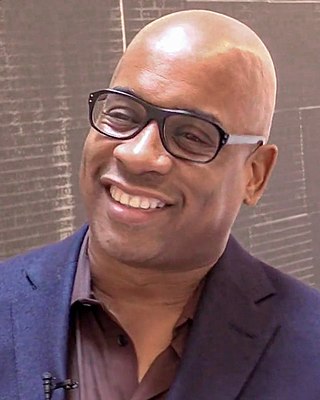
Glenn Ligon is an American conceptual artist whose work explores race, language, desire, sexuality, and identity. Based in New York City, Ligon's work often draws on 20th century literature and speech of 20th century cultural figures such as James Baldwin, Zora Neale Hurston, Gertrude Stein, Jean Genet, and Richard Pryor. He is noted as one of the originators of the term Post-Blackness.

Charles Sheeler was an American artist known for his Precisionist paintings, commercial photography, and the avant-garde film, Manhatta, which he made in collaboration with Paul Strand. Sheeler is recognized as one of the early adopters of modernism in American art.
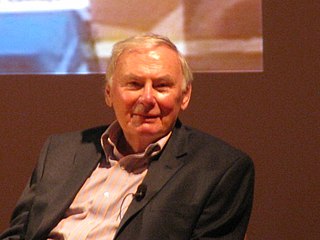
Richard Estes is an American artist, best known for his photorealist paintings. The paintings generally consist of reflective, clean, and inanimate city and geometric landscapes. He is regarded as one of the founders of the international photo-realist movement of the late 1960s, with such painters as John Baeder, Chuck Close, Robert Cottingham, Audrey Flack, Ralph Goings, and Duane Hanson. Author Graham Thompson writes "One demonstration of the way photography became assimilated into the art world is the success of photorealist painting in the late 1960s and early 1970s. It is also called super-realism or hyper-realism and painters like Richard Estes, Denis Peterson, Audrey Flack, and Chuck Close often worked from photographic stills to create paintings that appeared to be photographs."
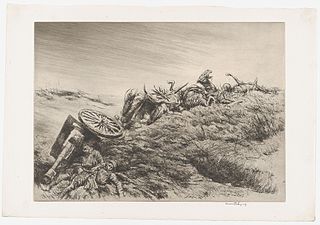
Kerr Eby was a Canadian illustrator best known for his renderings of soldiers in combat in the First and Second World Wars. He is held in a similar regard to Harvey Dunn and the other famous illustrators dispatched by the government to cover the First World War.

Keith Anthony Morrison, Commander of Distinction (C.D.), born May 20, 1942), is a Jamaican-born painter, printmaker, educator, critic, curator and administrator.

Irene Rice Pereira was an American abstract artist, poet and philosopher who played a major role in the development of modernism in the United States. She is known for her work in the genres of geometric abstraction, abstract expressionism and lyrical abstraction, as well as her use of the principles of the Bauhaus school. Her paintings and writings were significantly influenced by the complex intellectual currents of the 20th century.
Kerry James Marshall is an American artist and professor, known for his paintings of Black figures. He previously taught painting at the School of Art and Design at the University of Illinois at Chicago. In 2017, Marshall was included on the annual Time 100 list of the most influential people in the world. He was born and raised in Birmingham, Alabama, and moved in childhood to South Central Los Angeles. He has spent much of his career in Chicago, Illinois.

Gifford Beal was an American painter, watercolorist, printmaker and muralist.
Ron Gorchov was an American artist. He was known for his colorful, abstract paintings on curved canvases.
Marvin E. Newman is an American artist and photographer.
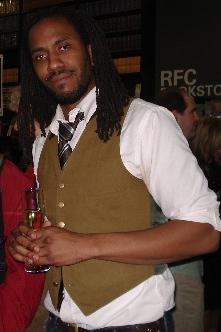
Rashid Johnson is an American artist who produces conceptual post-black art. Johnson first received critical attention in 2001 at the age of 24, when his work was included in Freestyle (2001) curated by Thelma Golden at the Studio Museum in Harlem. He studied at Columbia College Chicago and the School of the Art Institute of Chicago and his work has been exhibited around the world.

Mitchell Siporin (1910–1976) was a Social Realist American painter.

Edward Laning (1906–1981) was an American painter.
William Davenport Griffen was an American artist and muralist.
Beatrice Sophia Steinfeld Levy was an American printmaker and painter, draftsman, and instructor.
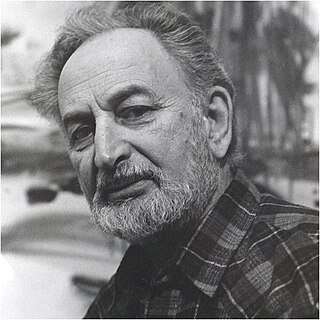
Hugh Mesibov was an American abstract expressionist artist who began his career as a federal artist for the Works Progress Administration during the Great Depression and later became a member of the 10th Street galleries and part of the New York School during the 1940s-60s. His work has elements of the mid-20th-century New York artistic experience such as Surrealist and Abstract Expressionist and figurative aspects across several media such as watercolor, oil, and acrylic as well as etchings, lithographs and monoprints. His work has received a global reputation and is included in many collections in the United States and worldwide.
Earl Horter was an American painter, illustrator, printmaker, teacher and art collector. He was instrumental in introducing modern art to Philadelphia as both an artist and collector of Cubist and abstract art. During the 1920s, he had one of the largest collections of modern art in the United States, and he was among the most prominent etchers of his generation.

Hyman J. Warsager (1909–1974) was an American artist known for his printmaking.
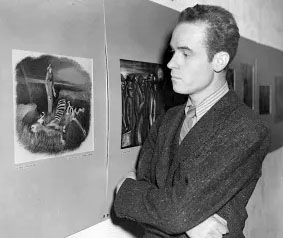
Bernard Joseph Steffen was an American artist known for his lithographs. He was part of the American Scene and worked at the Federal Art Project of the Works Progress Administration.

Chicago No-Jury Society of Artists or No-Jury Society was a Chicago artists association known for sponsoring art exhibits where anyone could exhibit art after paying a small fee per artwork. In 1922 the fee was $4.00.